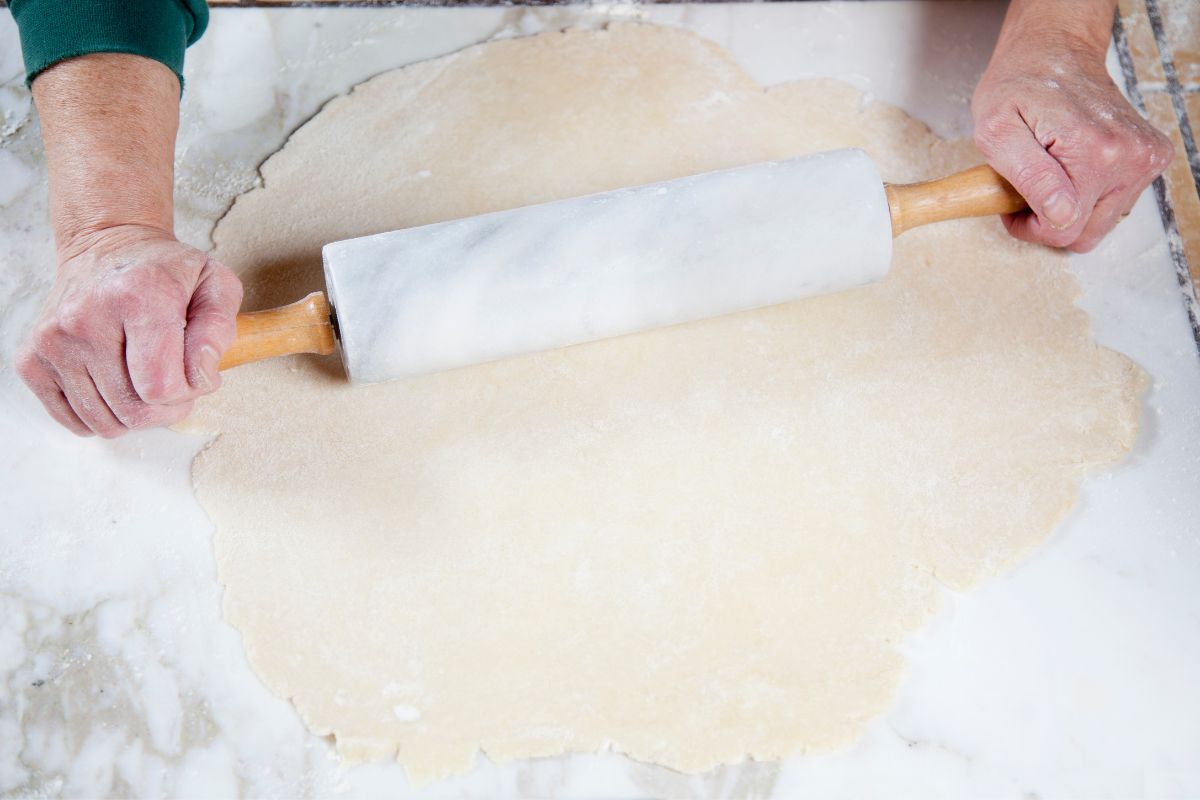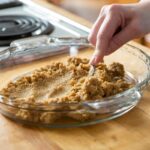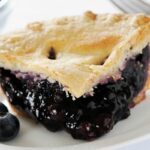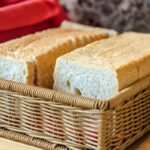Baking a pie sounds easy but many of us worry about getting the dough right, how it will taste and how it will look.
But have you ever asked yourself how thick should a pie crust be?

This guide will look at the ideal thickness of a pie crust and how you can achieve it.
Making Pie Crust
A pie is only as good as its crust so getting it right is important for successful pie making.
Of course this starts with having good ingredients in the right proportions but also in having confidence in making the pie crust.
Following a good recipe that is tried and tested is a great place to start.
The basic ingredients of flour, shortening, sugar, and salt are all you need to begin making a good pie crust.
As you get more confident you can experiment with different recipes.
When you have made your dough, you will turn it out onto a floured surface and knead it.
The next step is to wrap the dough in plastic wrap and put it in the refrigerator for at least an hour or even overnight.
Allowing the dough to rest is important to let the gluten relax.
It also lets the dough absorb all the water in the mixture and makes sure that it is pliable and won’t tear when rolled out.
Now all you have to do is roll out the pastry.
Rolling Out Pie Dough
Keeping the pie dough as chilled as possible while rolling it out will help to maintain its integrity.
Sprinkle some flour on a cold surface and lay the dough on it. You should also put some flour on the rolling pin and on the dough itself.
It’s important to work quickly when rolling dough as you don’t want it to warm up too much.
When rolling you need to work from the inside to the outside edge of the pastry applying even pressure at all times.
Following every few passes of the rolling pin turn the dough one quarter turn and occasionally flip it over to the other side, remembering to sprinkle it with flour if needed.
With handling the dough may become warm so put it on a baking sheet and chill for around 15 minutes.
Afterwards continue rolling the pastry until you have achieved the desired thickness for the pie crust.
How Thick Should A Pie Crust Be?

The ideal thickness for pie crust is generally accepted to be ⅛ of an inch and the width should be at least an inch wider than the pie dish it is going to be baked in.
But how can you accurately measure one eighth of an inch?
A good trick is to stack two quarters on top of each other next to your piece of dough.
It should be the same height as the two quarters. When you have rolled the pie crust to this depth check that it is the correct size for the pie dish by placing the dish on top of it.
You should have at least an inch extra of width on the dough to allow for crimping the edges with sufficient depth.
If you are satisfied with both the thickness and the size of the dough you can lift it carefully onto your rolling pin and drape it over the pie dish.
Start at the top and make sure the dough is centered as you lower it into the pie dish. Brush off any excess flour with a pastry brush.
Single Pie Crust
A single pie crust means that there is only a bottom layer of pastry dough in the pie. The dough lines the pie dish and holds the pie filling.
Sometimes a single pie crust is baked blind, meaning without filling.
This allows a filling to be added once the pastry has been baked and prevents the pie crust from becoming soggy.
A single pie crust will usually be one eighth of an inch thick with a slightly thicker edge.
This gives the pie strength and stops the edges from collapsing. It also allows the edge of the pie crust to be crimped.
Double Pie Crust
A double pie crust is a dessert that has a bottom and a top layer of pastry. In other words, the filling of the pie is completely enclosed in pastry.
The bottom pie crust is put into the pie dish, the filling is added and then a top layer of pastry is added over the filling.
This is then crimped around the circumference of the pie to seal the edges, prevent any of the filling oozing out and to give the edge of the pie strength.
In general the thickness of the bottom pie crust will be the same as the top, which should be an eighth of an inch.
The thickness of the pie crust around the edges will be more as there are two layers and extra depth to allow for the crimping.
All Butter Pie Crust
All butter pie crust depends on the butter in the recipe for its flavor and flaky texture.
With so much butter in the pie crust it’s even more important to keep the pastry cold especially when handling it.
The pieces of butter in the pie crust will provide a little leavening in the pastry and give a nice flaky texture.
The bottom crust should be an eighth of an inch thick as with other types of pie crust.
You can either add a top layer of pastry to your pie or use strips of all butter pie crust to create a lattice effect on the top of your pie.
In Conclusion
Knowing how thick your pie crust should be will help you to ensure that it is thick enough to support the filling but also not so thick that it does not cook properly.
We hope you have enjoyed our guide to how thick a pie crust should be. Happy baking!
- How To Reheat A Cheesesteak - November 5, 2023
- What Are Three Must Have Kitchen Knives? - September 22, 2023
- How To Protect Edges Of Pie Crust - June 15, 2023








